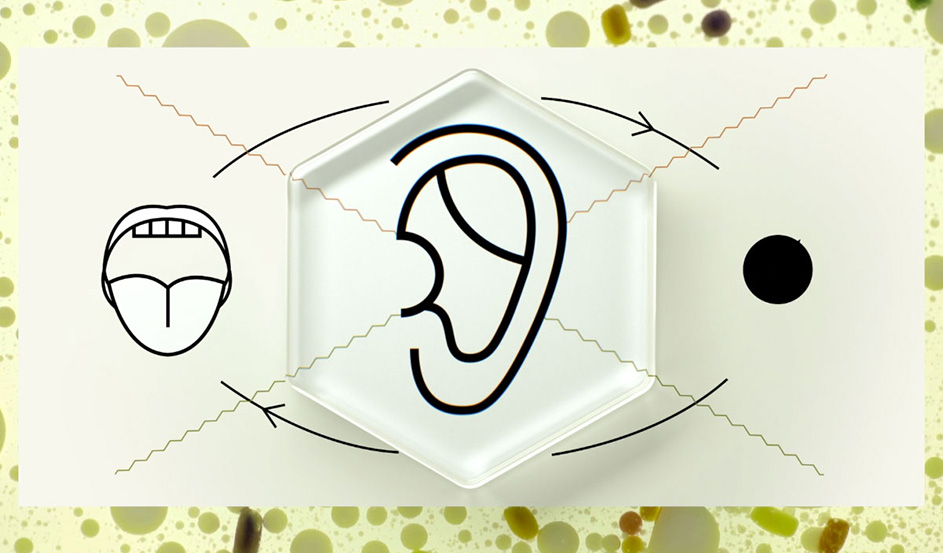
ENOUGH DECONSTRUCTION: ENTER GASTRONOMIC CONSTRUCTIVISM – A NEW DIRECTION
Gastronomy has undergone too many changes to recall in any one article, suffice to say that what we and our ancestors have eaten throughout history has been shaped by geography, war and exploration, as well as technological and social advancement. In this article I revisit the enduring legacy of gastronomy and hopefully provide you with a greater appreciation of this all-encompassing phenomenon. Not only have recent trends started to re-shape the priorities of the professional chef (Spence, Youssef 2016) and consequently, hopefully, the home chef, but we now see that central to the dining experience is how the recipients (i.e. the diners) makes sense of the food they eat according to their unique life experiences. How will this merging of gastronomy with social psychology impact on all of us who make a living and have a passion for the food industry and service?
Gastronomy has a history that like art stretches back as far as the beginning of mankind. Over time it has altered along the course of our discovery, advancement and knowledge of the world around us, yet always remained essential to our existence. It can be our greatest passion, indulgence and joy, an essential part of our personal contentment, a means to life, and yet increasingly it is even a cause of death. For some this may seem to aggrandize gastronomy, and for that purpose I turn to Savarin’s (1925) definition;
“Gastronomy is a scientific definition of all that relates to man as a feeding animal. Its object is to watch over the preservation of man by means of the best possible food…..It does so by directing, according to certain principles, all those who procure, search for, or prepare things which may be converted into food.”
In the last few centuries alone we have seen incredible changes in how we interact, engage, consume, value food and dining. Below is a taxonomy of the most recent and notable gastronomic periods as defined by Professor Charles Spence (Spence and Piqueras-Fiszman, 2014)
- Nouvelle Cuisine (1730s–1740s) a term used to describe a break from the past traditional cooking methods and food presentation (Hyman and Hyman 1999). Since then food critics such as Christian Millau and Henri Gault used the term to describe an emerging culinary style that was then just starting to make an appearance in the kitchens of some of France’s top chefs.
- Molecular Gastronomy (1980s onwards) this describes the fusion of the physical sciences with culinary artistry which has undoubtedly changed the fine dining landscape over the last couple of decades (Belasco 2006; Roosth 2013). Harold McGee is the name most closely associated with this culinary movement. This brilliant North American author has written a number of influential books in which he explores the science underpinning the practice of molecular gastronomy (McGee 1984; 1990). His significant contribution has allowed us to explore and better understand the physics and chemistry that lie behind a host of everyday culinary phenomena such as, for example, the Maillard reaction (McGee 1990).
- Modernist cuisine (2000 onwards) a preferred term by some chefs who possess as something of a love/hate relationship with the term ‘molecular gastronomy’, e.g. McGee (2006); Rayner (2006); Blumenthal (2008) and Gopnik (2011). It is therefore not surprising that Myhrvold and Young (2011), in what The Independent newspaper described as “the most spectacular cookbook the world has ever seen” (Walsh 2011, p. 11), chose to title their 3000-page masterpiece Modernist Cuisine.
- Note-by Note (2014); Hervé This abandons Molecular Gastronomy (see Ashley 2013) advancing the notion that the future of gastronomy lies in note-by-note cuisine. This (2012) describes this method as: “a culinary trend in which no plant (vegetables, fruits) or animal (meat, fish) tissues are used, because these traditional food ingredients are mixtures of compounds giving poor control to the cook. Instead, note-by-note cuisine makes use of “pure” compounds in order to build all aspects of dishes: taste, odor, color, texture, and so on.”
- Neurogastronomy (2012 onwards) this method delves into how our brains process the food we eat. It focuses on how the intricacies of our neural network and complexities of our brains’ process the flavours that we all experience when eating or drinking. This phenomenon really emerged as a scientific discipline in the first years of the twenty-first century. Based on a number of the studies and thanks to advancements in fMRI researchers have investigated which parts of the brain respond when a recipient is given food of some sort or another. This has generated some fascinating results (e.g. St-Onge et al. 2005). Neuroimaging studies have been able to take this a further step enabling researchers to understand why exactly it is that people think that a drink tastes better when they have been told that it costs more (Plassman et al. 2008; Spence 2010).
(Spence and Piqueras-Fiszman (2014).
This brings us nicely to today. Welcome to the experience economy. Chefs are now cooking with emotions in mind, but unlike their predecessors it is not their own emotions that they are engaged in satisfying. In an interview with The Telegraph newspaper gastronomic icon Ferran Adria noted; “In the last 100 years there have been only two culinary movements, nouvelle cuisine and techno-emotional. Only two!”
It is the emotions of their guests/diners that are central to this neo-gastronomical notion. Experiential, experimental, innovative, collaborative, engaging, journeys that transport guests to new places in their mouths and in their minds. The science of gastronomy has emerged from the kitchen and taken a keen interest in the dining room. It is now the time of Gastrophysics and Multisensory Gastronomy.
If Molecular Gastronomy was all about exciting the guest through use of novel textures, flavours and cooking techniques, Multisensory Gastronomy is about exciting the guest through engaging them on every sensory level and by default; tapping into their emotions.
Gastrophysics is the combination of gastronomy and psychophysics – gastronomy being the knowledge and understanding of all that relates to man as he eats (Savarin 1825), and psychophysics being the branch of psychology that deals with the relations between physical stimuli and mental phenomena.
Gastrophysicists like Professor Charles Spence are inspired by the neuroscience, but are much more interested in studying people’s real-world food behaviours (Spence and Piqueras-Fiszman, 2014). This research is providing chefs with revolutionary insights into how we perceive flavour and the impact that all the sensory touch points can have on a diner’s experience. Ultimately this research has the ability to give us a greater understanding of the relationship we have with food and the food choices we make on a day to day basis, all of which may be beneficial for our health and the environment. It could and will change the way we eat in the future.
Sensory and experiential/immersive gastronomic experiences are growing in popularity all over the world, whether it’s a sensory whiskey tasting hosted in New York or an immersive dining experience using projection mapping in Shanghai. Some want to go back to basics with ‘naked dining’ (nude diners and nude food i.e. raw), others want to go full throttle with technology to create dining experiences like no other age before us – think Sublimotion in Ibiza (vibrating table, wall mapped projections etc). This is not all without its critics and detractors, like with all gastronomic advancements (Molecular Gastronomy being a major one), there are those who either do not see the need for such developments, and those who do not wish to let go of past traditions, which no one is saying you should, for where would we be without our cherished culinary and gastronomic icons of past and present – careme, saverin, escoffier, Kurtti, Bucose, McGee, This, Adria, Blumenthal, Keller, Achatz and so on. Then there are those who ignore it out of a sense of fear of the unknown.
“Periods of gastronomic change are inevitably periods of gastronomic controversy. When there is no controversy, there is no inventiveness, because controversy of course doesn’t appear if there is no tension between tradition and innovation, or the other way, between innovation and academic conventions.” (Revel 1985, on the introduction of the Nouvelle Cuisine)
So here we are in an era of gastronomic change; the shape of dining is being forever altered as we now look for ways to bring these sensory elements into our home dining experiences. Will it be sensory dining kits designed in a similar way to how molecular gastronomy kits encouraged budding home cooks to take the plunge in to that world?
Will this knowledge trickle or filter down in some way in to the mainstream so as to effect our homes? Molecular Gastronomy has in some way, the most notable being one of the hallmark techniques (linked with technologies to improve highly accurate low temperature cooking) to emerge from this period (despite being in use since the late 70s) was sous vide cooking. In the earlier days chefs like Achatz were buying these apparatus from laboratory equipment suppliers, Polyscience. It has since filtered down to many restaurants and even gastro pubs. Nowadays companies such as AEG are producing domestic appliances with the same features as professional ovens (which are produced by parent company Electrolux), allowing home cooks to integrate such a cooking method into their oven. They work as regular ovens, however they also work as a steam oven (and even a combination of the two features). The point is this somehow ‘democratises’ such a technique as makes it much more accessible. Perhaps not at today’s price point but if the technique does pick up more traction (given the growing number companies out there developing these appliances) perhaps prices will come down and more people will cook sous vide. It is one of the Molecular Gastronomy techniques to go more mainstream and I suggest that is because it is a great way of slow cooking (which has gained a following over the years), and without going in to any more detail, suffice to say food is generally more nutritious when cooked sous vide.
Chefs at all levels are now being exposed to increasing levels of creativity in their respective fields. One just has to see how social media has impacted and brought to prominence that art of plating heralding in the Instagram chef. The gastronomic icons mentioned above and all their disciples have travelled the world and spread their ideas far and wide. Coupled with the fusion of cuisines and flavours from around the world which has come as a result of globalization and greater mobility (particularly for chefs), the world’s major cities currently have some extremely exciting stuff going on.
As chefs, how will this new found knowledge evolve into something even more innovative? What is the next step? What is creativity versus innovation in gastronomy? What is an evolutionary step and what is revolutionary? And finally; what is our role at Kitchen Theory? These are the questions I constantly have on my mind.
My answer, at least what I believe to be the next step, relates to how Gastrophysics is giving us insights into the construction of; flavour, appreciation, satiety, likes/dislikes, memories and how all of this is connected to the feedback our brain receives from the stimulus presented via our senses. From the title of this article you will now know what I am alluding to; Gastronomic Constructivism.
In short this is a philosophical approach which closely relates to understanding the term gastronomy, as defined at the beginning of this piece, and combining it with the theory of constructivism.
Constructivism (also known as Constructionism) means that all the knowledge we acquire through life’s experience is a construction which is contingent on convention, human perception and social experience. This means that although two people may undergo the same event/episode they will both make sense of that in entirely different and unique ways in accordance with their ‘mental templates; i.e. personal constructs. Personal constructs can be regarded as an individual set of perspectives people use to structure, interpret and anticipate events (Tan and Hunter, 2002; Benjafield, 2008). Constructs are the attributes which people use to make sense of their worlds. Kelly (1963: 105)
In a recent opinion piece Spence and Youssef (2016) explored this notion of flavour being a construct of one’s mind. “For perception, and that includes the diner’s belief concerning, and experience of, that which they are about to eat, is always an act of construction.” (Spence and Youssef, 2016)
So, in the spirit of constructivism, no two people can savour an ingredient in exactly the same way neither physiologically (as our chemical senses are highly personalised), nor psychologically (formed in part by our own highly personalised exposure to culture, society, travel, personal history and so on). And yet the majority can appreciate flavours, articulate why they like or dislike a taste/flavour/smell/texture and can obviously share similar likes and dislikes as others. Our experience of flavour is constructed in our minds, it is subjective, open to interpretation. There is no single valid definition for a flavour (if there were wine tastings would be a lot more precise and boring). It is both pragmatic and relativistic. There are few objective truths in gastronomy (eat poisonous berries and you die is one that instantly springs to mind).
The notion that our environment (such as that of being on an aeroplane) impacts our ability to perceive flavour has become far more prominent in recent years (Spence, Michel and Smith, 2014). Linked to this is research showing that loud noises can interfere with how the brain interprets the taste of the flavour of food (Crocker EC, 1950). That what we smell around us as we eat can change how we perceive and enjoy flavour (Spence and Youssef, 2015). And that lighting and music can impact our flavour perception (Spence, Velasco and Knoeferle, 2014).
So we know that the future chef is now constructing a menu and dining environment based on the understanding that the guest will experience the dishes, their presentation, flavour, textures, smells and all other sensory and environmental aspects in their own way, based on their own construction of reality. But what is the role of the diner?
This brings us to the idea of the “beholder’s share”;
“Riegl discovered a new psychological aspect of art: namely, that art is incomplete without the perceptual and emotional involvement of the viewer. Not only does the viewer collaborate with the artist in transforming a two-dimensional likenesses on a canvas into a three-dimensional depiction of the visual word, the viewer interprets what he or she sees on the canvas in personal terms, thereby adding meaning to the picture. Riegl called this phenomenon the “beholder’s involvement” (Gombrich later elaborated on it and referred to it as “the beholder’s share”). E.H. Gombrich,2007
And so Gastronomic Constructivism is all about the diner. We move away from the chef, whose culinary creations and gastronomic experiences are no longer the focal point of the experience. This becomes about what is on the plate, off the plate and the story which begins with the diner, in their mind, rather than the chef. But in here lies the opportunity for the forward thinking chef to influence the diner’s experience, through storytelling, experimental, experiential and well-designed sensory elaborations all of which take into account; the scientific research of the Gastrophysics, intuition, emotional intelligence and creativity.
Savarin (1825) democratised gastronomy when he said,
“Gastronomy rules all life, for the tears of the infant cry for the bosom of the nurse; the dying man receives with some degree of pleasure the last cooling drink, which, alas! he is unable to digest. It has to do with all classes of society, for if it presides over the banquets of assembled kings, it calculates the number of minutes of ebullition which an egg requires.”
Gastronomic Constructivism transforms gastronomy by taking it out of the upper echelons of the cheffing world and puts its appreciation and validity in to the minds of the diners, whom so ever they may be. Where will this take us to next?
References
References
Benjafield, J. G. (2008). George Kelly: Cognitive psychologist, humanistic psychologist, or something else entirely? History of Psychology, 11, 239-262.
Kelly, G. A. (1963). A theory of personality. New York, NY: Norton.
Brillat-Savarin, J. A. (1835). Physiologie du goût [The philosopher in the kitchen / The physiology of taste]. J. P. Meline: Bruxelles. Translated by A. Lalauze (1884), A handbook of gastronomy. London: Nimmo & Bain.
Spence, C., & Piqueras-Fiszman, B. (2014) The perfect meal: The multisensory science of food and dining. Wiley-Blackwell, UK.
Spence, C., & Youssef, J. (2016) Constructing flavour perception: From destruction to creation and back again, Flavour.
Tan, F., & Hunter, M. (2002) The repertory grid technique: A method for the study of cognition in information systems. MIS Quarterly, 26, 39-57.
This, H. (1994) Scientific American
http://www.telegraph.co.uk/foodanddrink/9428852/What-next-for-El-Bulli-mastermind-Ferran-Adria.html
Gobrich,. E. H. (2007). The story of art
Crocker E.C. (1950) The technology of Flavors and Odors. Confectioner
Spence C, Youssef J, 2015. Olfactory dining: designing for the dominant sense, Flavour
Spence C, Velasco C and Knoeferle K, 2014. A large sample study on the influence of the multisensory environment on the wine drinking experience. Flavour


Leave a Reply